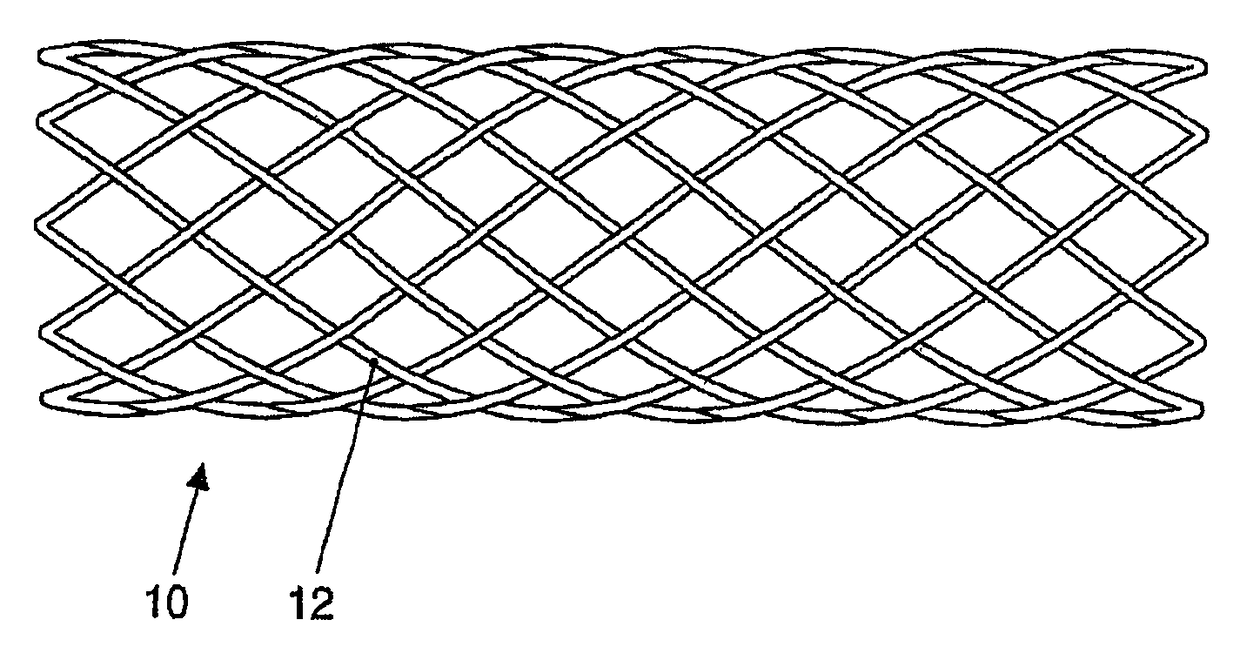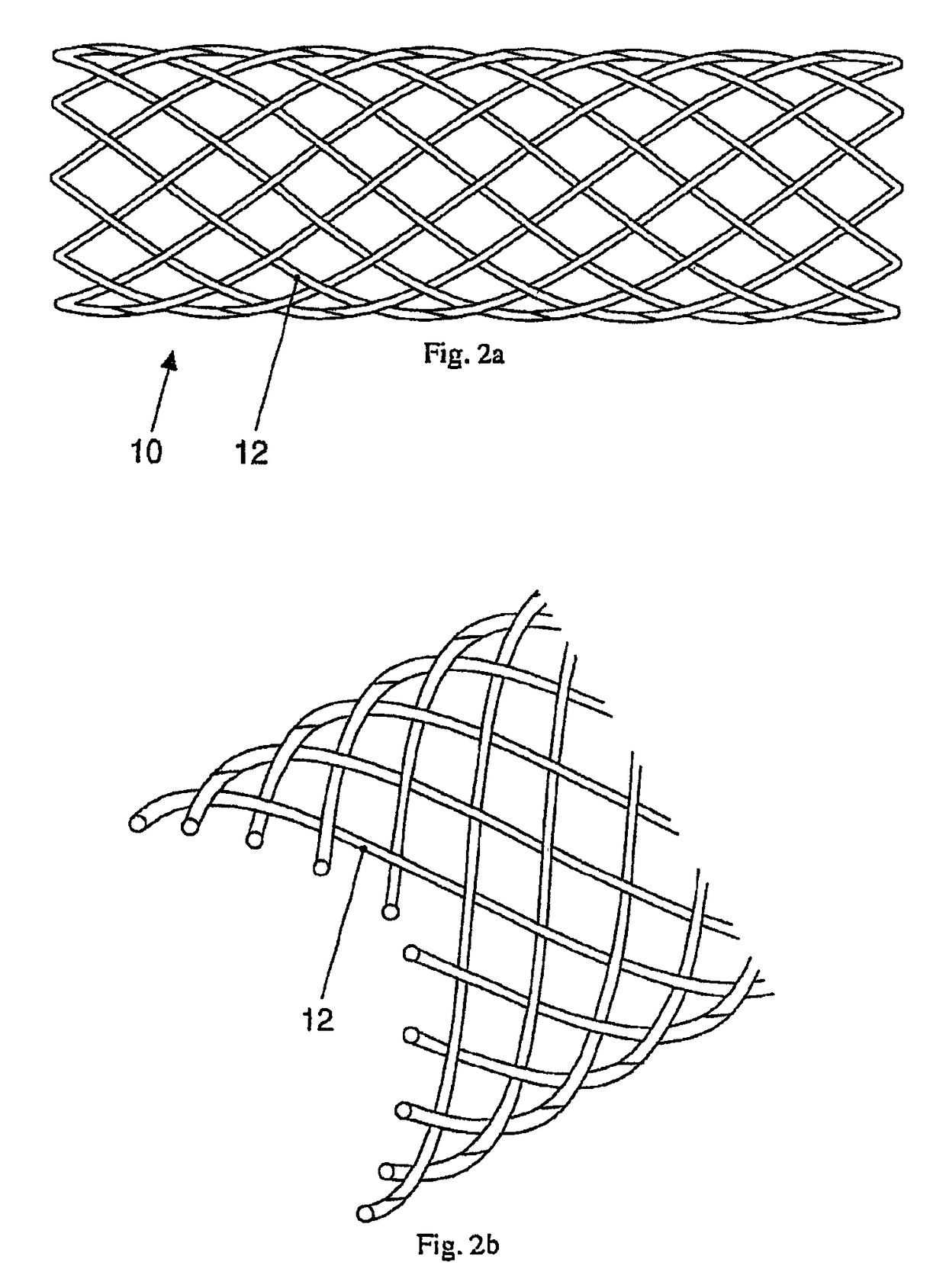Absorbable medical implant made of fiber-reinforced magnesium or fiber-reinforced magnesium alloys
a medical implant and magnesium alloy technology, applied in the field of absorbable medical implants, can solve the problems of limited use of biodegradable polymers, deterioration of the structure comprising the material, and known alloys, and achieve the effect of improving material properties and high biocompatibility
- Summary
- Abstract
- Description
- Claims
- Application Information
AI Technical Summary
Benefits of technology
Problems solved by technology
Method used
Image
Examples
Embodiment Construction
[0050]FIG. 1 shows, in very schematic form, the mode of operation of a melt spinner 10 for producing rapidly solidified amorphous alloys. A melt 12 is provided in a sample container 14, which is heatable using a heater 16. Due to the application of pressure (shown by the arrow 18), the melt 12 exits from a hole at the lower end of the sample container 14 and falls on a rapidly rotating, cooled cylinder 20 made of copper (a rotation direction of the cylinder 20 is indicated by the arrow 22). As a result of the very rapid cooling of the material, a transition into the crystalline state may be prevented. Criteria for glass formation are particularly (i) low eutectics, because a low stability of the crystal and / or a higher stability of the melt is to be expected there and (ii) a significant size difference of the participating atoms of the alloy.
[0051]For the preparation of amorphous or nanocrystalline alloys of especially suitable compositions, either binary and ternary alloy systems m...
PUM
| Property | Measurement | Unit |
|---|---|---|
| diameter | aaaaa | aaaaa |
| size | aaaaa | aaaaa |
| diameter | aaaaa | aaaaa |
Abstract
Description
Claims
Application Information
 Login to View More
Login to View More - R&D
- Intellectual Property
- Life Sciences
- Materials
- Tech Scout
- Unparalleled Data Quality
- Higher Quality Content
- 60% Fewer Hallucinations
Browse by: Latest US Patents, China's latest patents, Technical Efficacy Thesaurus, Application Domain, Technology Topic, Popular Technical Reports.
© 2025 PatSnap. All rights reserved.Legal|Privacy policy|Modern Slavery Act Transparency Statement|Sitemap|About US| Contact US: help@patsnap.com



